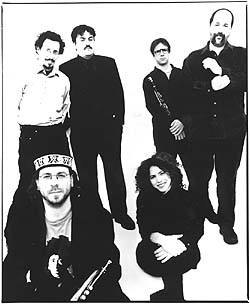
Read the novel
The Goddess
Goddess of Tomorrow
E-Mags, Group Blogs, Etc.
- National Review Online
- The Weekly Standard
- The London Spectator
- The Atlantic Online
- City Journal
- Catallarchy
The Big Boys
Libertarians
Of Great Interest
NJ and NJ Politics
All the News You Need
Meta Information
Meta Meta Information
Toons
Toons Plus
For a Great Time in the Woods
Archives
- 10/26/2003 - 11/02/2003
- 11/02/2003 - 11/09/2003
- 11/09/2003 - 11/16/2003
- 11/16/2003 - 11/23/2003
- 12/07/2003 - 12/14/2003
- 12/21/2003 - 12/28/2003
- 12/28/2003 - 01/04/2004
- 01/04/2004 - 01/11/2004
- 01/11/2004 - 01/18/2004
- 01/18/2004 - 01/25/2004
- 01/25/2004 - 02/01/2004
- 02/01/2004 - 02/08/2004
- 02/08/2004 - 02/15/2004
- 02/15/2004 - 02/22/2004
- 02/22/2004 - 02/29/2004
- 02/29/2004 - 03/07/2004
- 03/07/2004 - 03/14/2004
- 03/14/2004 - 03/21/2004
- 03/21/2004 - 03/28/2004
- 03/28/2004 - 04/04/2004
- 04/04/2004 - 04/11/2004
- 04/11/2004 - 04/18/2004
- 04/18/2004 - 04/25/2004
- 05/23/2004 - 05/30/2004
- 05/30/2004 - 06/06/2004
- 06/06/2004 - 06/13/2004
- 06/13/2004 - 06/20/2004
- 06/20/2004 - 06/27/2004
- 07/04/2004 - 07/11/2004
- 07/25/2004 - 08/01/2004
- 08/01/2004 - 08/08/2004
- 08/08/2004 - 08/15/2004
- 08/15/2004 - 08/22/2004
- 08/22/2004 - 08/29/2004
- 09/05/2004 - 09/12/2004
- 09/12/2004 - 09/19/2004
- 09/19/2004 - 09/26/2004
- 09/26/2004 - 10/03/2004
- 10/03/2004 - 10/10/2004
- 10/10/2004 - 10/17/2004
- 10/17/2004 - 10/24/2004
- 10/24/2004 - 10/31/2004
- 10/31/2004 - 11/07/2004
- 11/07/2004 - 11/14/2004
- 11/14/2004 - 11/21/2004
- 11/21/2004 - 11/28/2004
- 11/28/2004 - 12/05/2004
- 12/05/2004 - 12/12/2004
- 12/12/2004 - 12/19/2004
- 12/19/2004 - 12/26/2004
- 12/26/2004 - 01/02/2005
- 01/02/2005 - 01/09/2005
- 01/09/2005 - 01/16/2005
- 01/16/2005 - 01/23/2005
- 01/23/2005 - 01/30/2005
- 01/30/2005 - 02/06/2005
- 02/06/2005 - 02/13/2005
- 02/13/2005 - 02/20/2005
- 02/20/2005 - 02/27/2005
- 02/27/2005 - 03/06/2005
- 03/06/2005 - 03/13/2005
- 03/13/2005 - 03/20/2005
- 03/20/2005 - 03/27/2005
- 03/27/2005 - 04/03/2005
- 04/03/2005 - 04/10/2005
- 04/10/2005 - 04/17/2005
- 04/17/2005 - 04/24/2005
- 04/24/2005 - 05/01/2005
- 05/01/2005 - 05/08/2005
- 05/08/2005 - 05/15/2005
- 05/15/2005 - 05/22/2005
- 05/22/2005 - 05/29/2005
- 05/29/2005 - 06/05/2005
- 06/05/2005 - 06/12/2005
- 06/12/2005 - 06/19/2005
- 06/19/2005 - 06/26/2005
- 06/26/2005 - 07/03/2005
- 07/03/2005 - 07/10/2005
- 07/10/2005 - 07/17/2005
- 07/17/2005 - 07/24/2005
- 07/24/2005 - 07/31/2005
- 07/31/2005 - 08/07/2005
- 08/07/2005 - 08/14/2005
- 08/14/2005 - 08/21/2005
- 08/21/2005 - 08/28/2005
- 09/04/2005 - 09/11/2005
- 09/11/2005 - 09/18/2005
- 09/18/2005 - 09/25/2005
- 09/25/2005 - 10/02/2005
- 10/02/2005 - 10/09/2005
- 10/09/2005 - 10/16/2005
- 10/16/2005 - 10/23/2005
- 10/23/2005 - 10/30/2005
- 10/30/2005 - 11/06/2005
- 11/06/2005 - 11/13/2005
- 11/13/2005 - 11/20/2005
- 11/20/2005 - 11/27/2005
- 11/27/2005 - 12/04/2005
- 12/04/2005 - 12/11/2005
- 12/11/2005 - 12/18/2005
- 12/18/2005 - 12/25/2005
- 12/25/2005 - 01/01/2006
- 01/01/2006 - 01/08/2006
- 01/08/2006 - 01/15/2006
- 01/15/2006 - 01/22/2006
- 01/22/2006 - 01/29/2006
- 01/29/2006 - 02/05/2006
- 02/05/2006 - 02/12/2006
- 02/12/2006 - 02/19/2006
- 02/19/2006 - 02/26/2006
- 02/26/2006 - 03/05/2006
- 03/05/2006 - 03/12/2006
- 03/12/2006 - 03/19/2006
- 03/19/2006 - 03/26/2006
- 03/26/2006 - 04/02/2006
- 04/02/2006 - 04/09/2006
- 04/09/2006 - 04/16/2006
- 04/16/2006 - 04/23/2006
- 04/23/2006 - 04/30/2006
- 04/30/2006 - 05/07/2006
- 05/07/2006 - 05/14/2006
- 05/21/2006 - 05/28/2006
- 01/04/2009 - 01/11/2009
- 01/25/2009 - 02/01/2009
Drooling on the Pillow
Tuesday, January 31, 2006
Treyf Banquet
 Here are three tunes by the Klezmatics, from their Rise Up! Shteyt Oyt! album. The first is Kats un Moyz. Count the subversive musical elements that creep in and stare from the shadows or flash by like a witch in a hurricane. Powered by Castpost This one reminds me of a hot summer night about fifteen years ago when I lived in Washington Heights. My side of Broadway was mostly Hasids, the other side was all Dominican. One evening I was walking home I looked down at a vacant lot in which an enormous tent had been raised. With the heat, some of the top panels had been removed and I could see perhaps three hundred Hasids dancing. The music was so abandoned and the dance was so ecstatic, and yet they were three hundred men in black coats and black hats and payots, packed so closely they each had their hands on someone's shoulders, turning in a vast pinwheel around the center pole. No space between them that I could see, and yet they would suddenly spin and leap and shout and then lurch forward in their mad dance. It was moving and stunning and a little scary for a Irish kid from the shore. (Even though I lived for two years in Lakewood.) Here's what Kenneth Rexroth said about Dancing Hasids: Hasidism came to have a whole group ritual, specialAnyway, Tepel, reminds me of the music I heard that night. Powered by Castpost Lastly, Holly Near's I'm Not Afraid speaks for itself. The notion is commonly expressed these days, usually disguising a fundamental hostility to religion in general. Taken at face value, however, which, since this album was produced in the months after 9/11, is how I take this expression of it, it represents the essance of humanism. Powered by Castpost |
